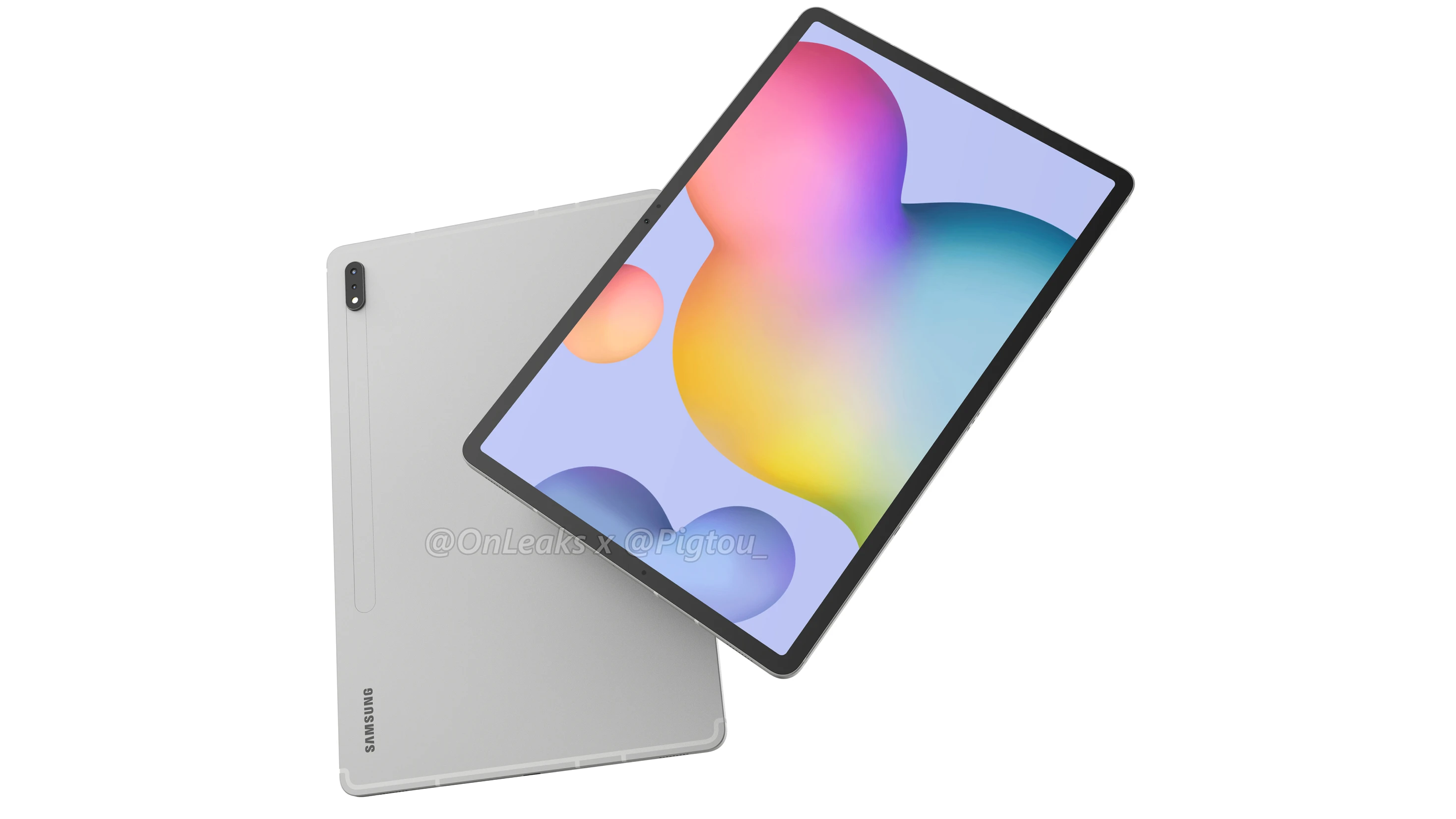Samsung remains the sole Android manufacturer really trying to take on the iPad these days, and it looks like the company is not lowering the effort it's putting into its Tab S series. After we've already seen first renders of the Galaxy Tab S7+ and got some details on a 12.4-inch screen and the dimensions, SamMobile now provides an almost complete overview of the rest of the tablet's hardware specifications.
The publication obtained the information from what it claims to be "reliable sources," saying that the Tab S7+ will come with the Snapdragon 865+, giving it sub-6GHz 5G support. That means the tablet won't work on Verizon's small but ultra-fast 5G network, though Samsung might create another variant for the carrier if it deems that feasible. The chipset is supported by either 6 or 8GB of RAM, depending on whether you choose 128 or 256GB of storage. The 12.4-inch AMOLED screen is supposed to have a resolution of 2800 x 1752, giving it a display density of 267 ppi, which is right on par with the 12-inch iPad Pro.
On the software side, the tablet will come with OneUI 2.5 and Android 10. There's also supposed to be an in-display fingerprint reader on the Tab S7+, though it's unclear where it will be positioned. The S-Pen will be on board, too, though we haven't heard much about the stylus itself.
In contrast to previous rumors that pointed to a 9,800mAh power supply, SamMobile says the battery will be 10,090mAh for both LTE and 5G variants — the 9,800mAh figure might apply to Wi-Fi models only or was just plain wrong. The tablet might also support 45W charging as per Danish regulators. That would make it compatible with faster charging speeds than the iPad Pro.
Concerning photography and videography, we can expect a dual-camera array consisting of 13 and 5MP sensors and an 8MP front-facing camera, putting it on par with its predecessor, the Tab S6.
If the Tab S7+ does come with all of these specs, we can assume that Samsung is continuing its quest to build capable, high-end tablets. It's a shame that there are much fewer great tablets apps on Android than on iPadOS, but at least Samsung works around that with its own apps and some software tweaks like its multi-window mode.
Image: Pigtou

